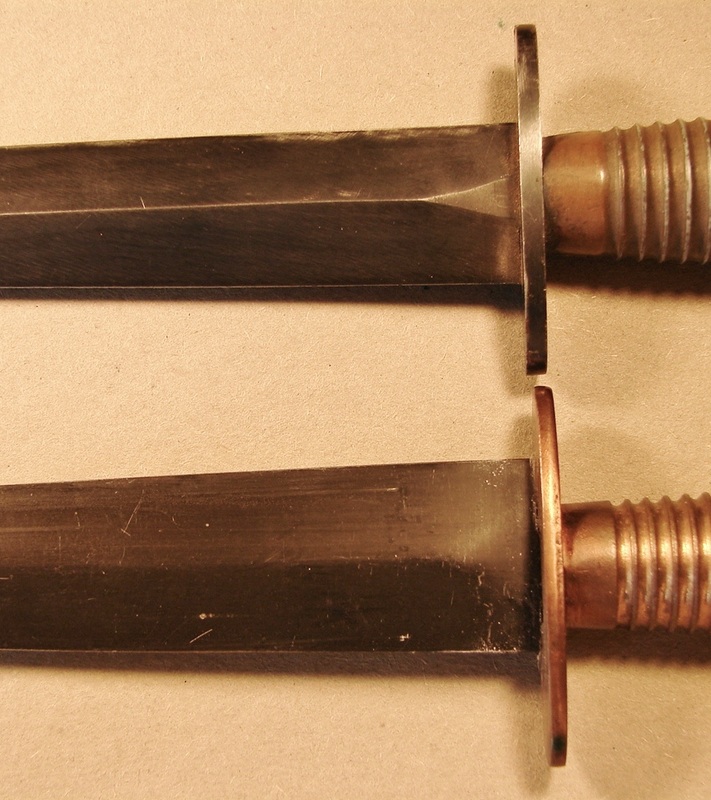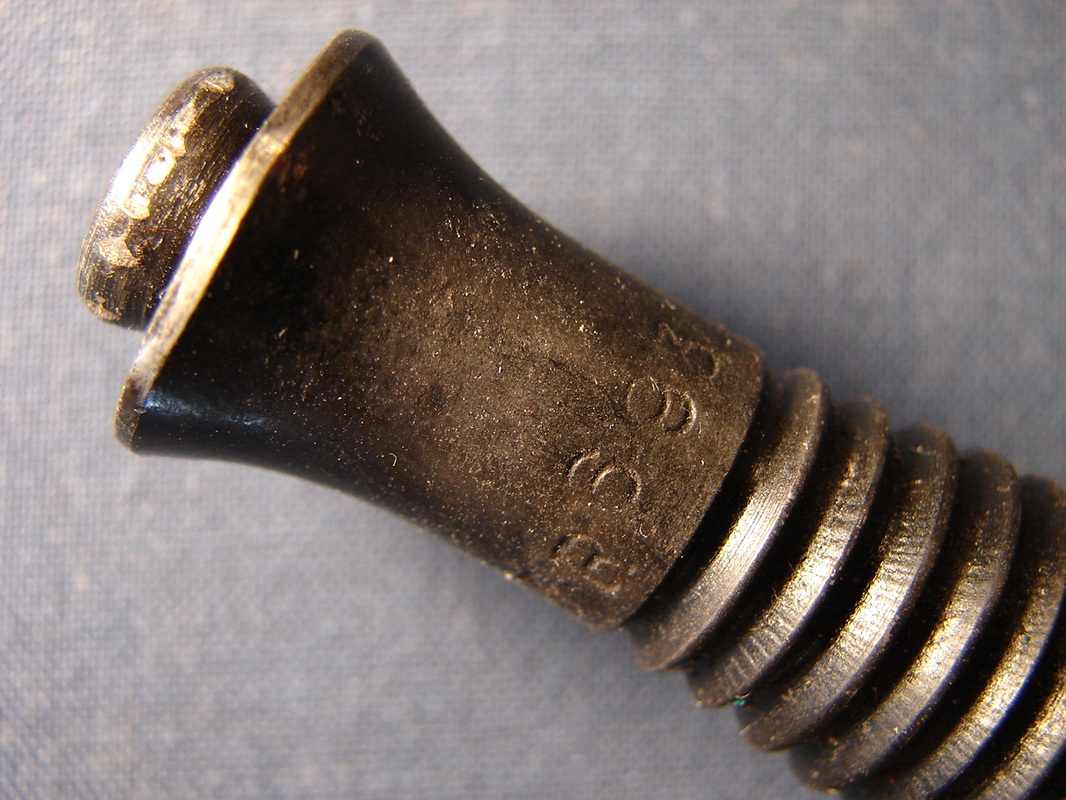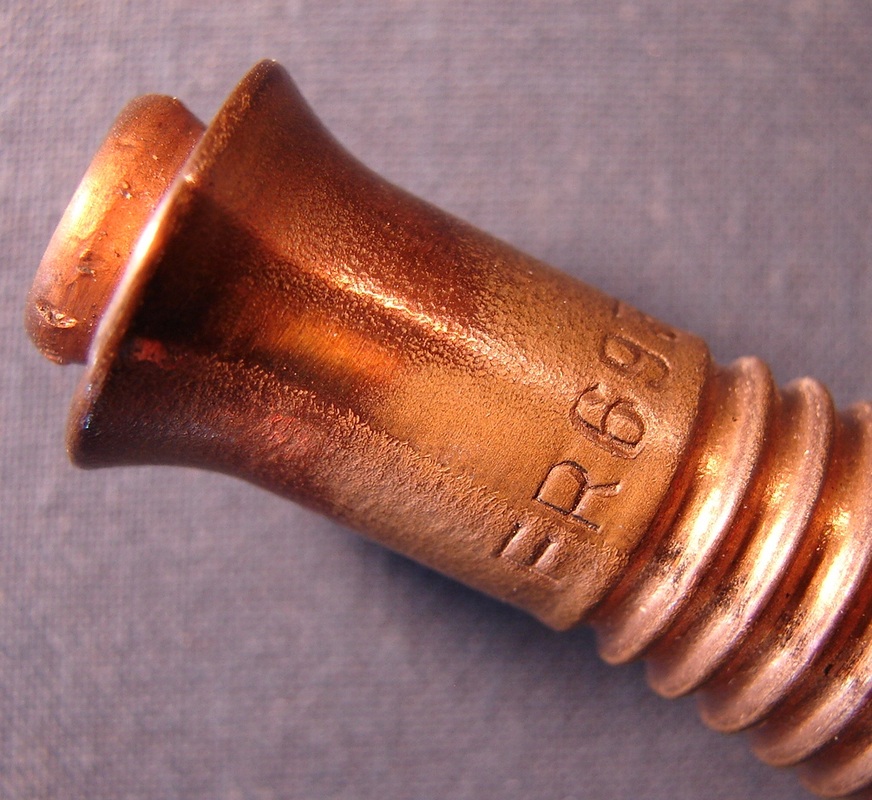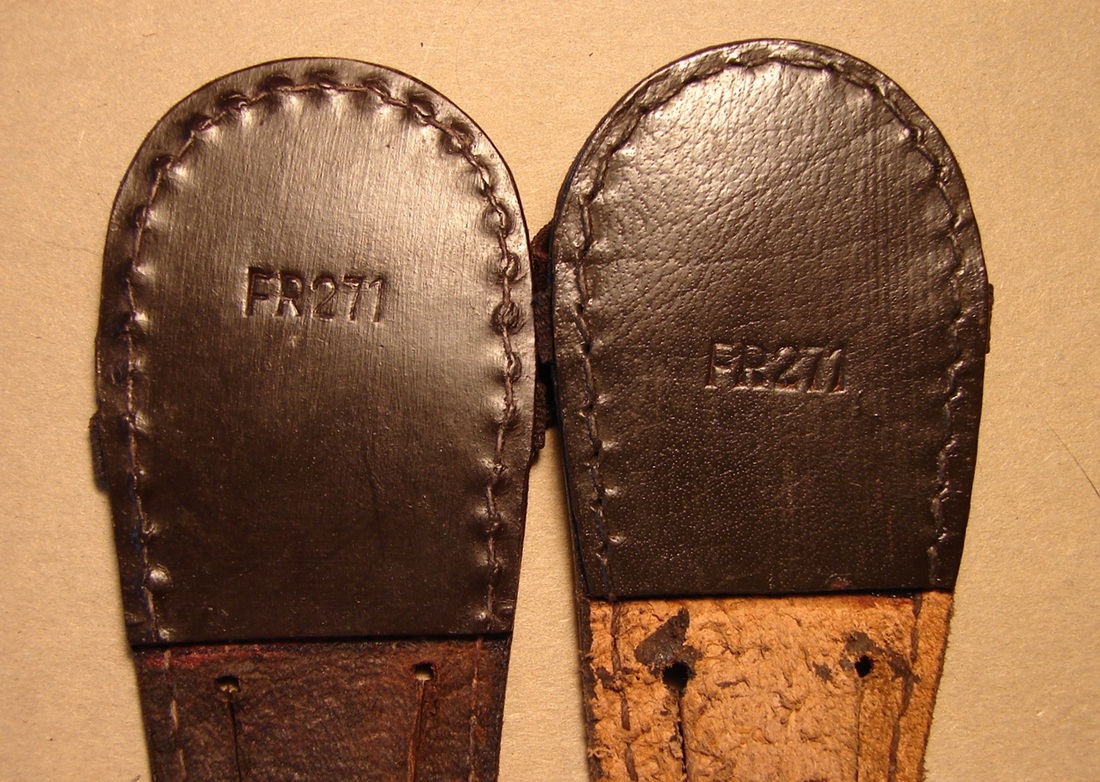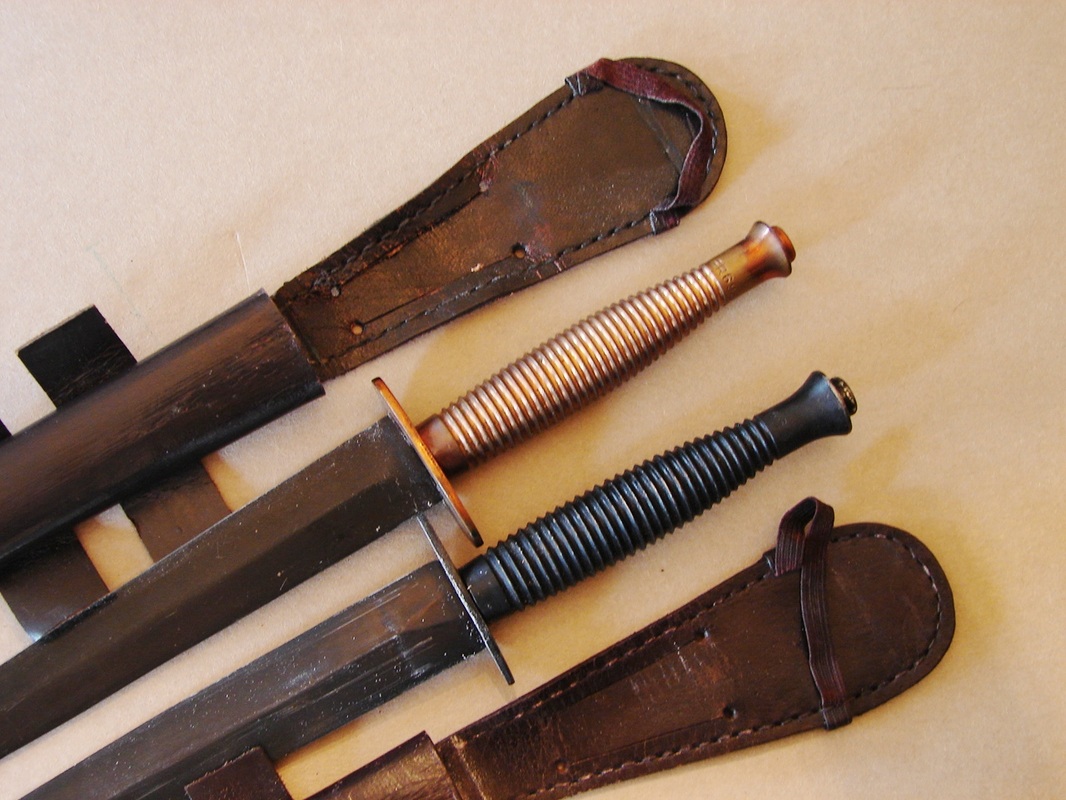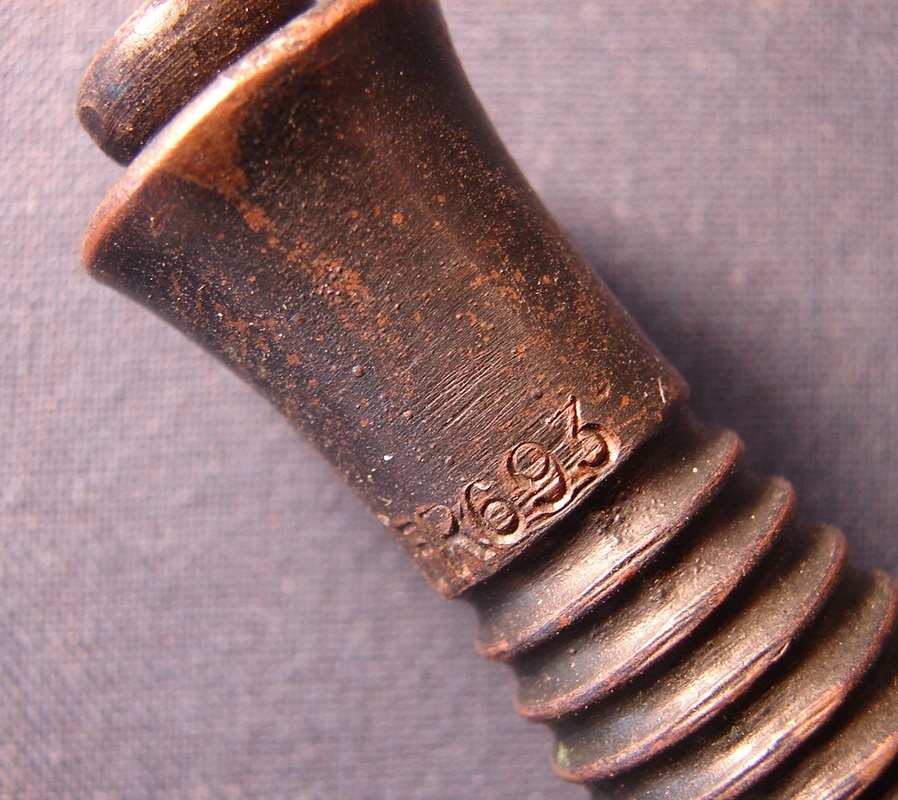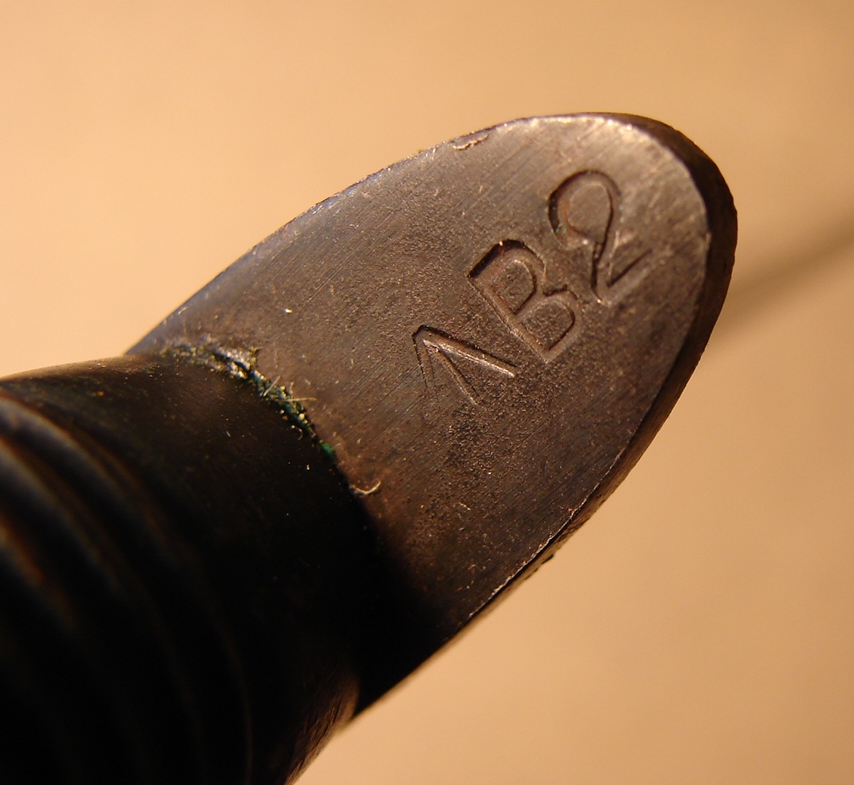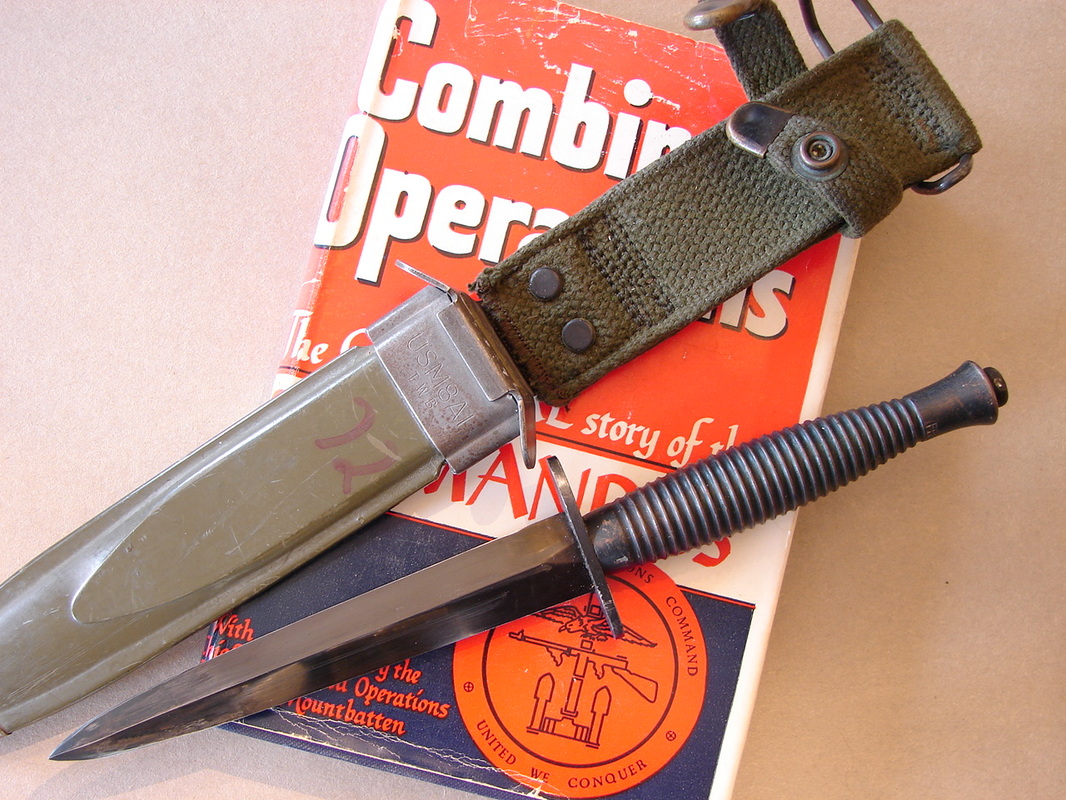Third Pattern FR693:
Here are some knives that require more research. Perhaps one of our readers can provide some information on them. I had resigned the FR693 knives in my collection to post war fakes. Somewhere I heard they were re-issued WW-II knives for the Falklands campaign. But, two of them are obviously Indian or Pakistani made knives. The third one is a Wilkinson knife, Marked with the coveted ^ B2. This photo clearly shows the lack of definition in the blade on the lower knife. Mr. Ron Flook has helped explain something about these knives. His comments are at the bottom of this page.
|
Below: Here are the two knives and sheaths I assumed to be of Indian manufacture. Note the elastic bands on the sheaths are the narrow brown elastic traditionally used on WW-II knives made in England. I suppose it is possible the elastic they used was left over from WW-II. The sheaths are made of a very heavy leather (water buffalo?) and have nicer than usual chapes on the ends. The leather tabs are not perforated.
|
Illustrated here are the stampings on the back sides of the frogs, FR271. These certainly appear to be legitimate arsenal stampings of some sort.
|
|
Right: This knife came from a collector on the west coast of the USA. These have finally been authenticated as Wilkinson Sword Co. knives with the B-2 and broad arrow on the guard. In addition it has FR693 stamped around the pommel, which has a mold number 1, indicating probable WW-II manufacture. The stout blade has been badly broken and re-tipped at some date. It still retains most of its original blue. The tang is not peened over. Were these knives built up from left over parts, or maybe this one was disassembled to repair the blade or add the stamping?
If you have knowledge of these knives please contact me via the references page and we will gladly add what you have to offer. |
Below: Here is the photo of the genuine FR693 knife from Wilkinson Sword Co. It came in this popular American USM8A1 bayonet sheath
"I have just noticed your update on FR693 knives, whilst it is unfortunately the case that these knives have now been faked it is also the case that original
WW2 stock was retained by the British after WW2 and marked up with the FR693 mark and the associated FR271 on the back of the sheath. Your B2 marked knife with the FR693 mark is 100% OK the other 2 as you surmise are both wrong. The FR693 mark is to be found on 3rd patterns, and 2nd patterns.
We also have post war knives purchased from Wilkinson Sword which are also marked see my book "British and Commonwealth Military Knives" page 78 for more on these. I also wrote up more on these knives in an article which ran in the Dec 1999 issue of Knife World. These knives have no association with the Falklands War."
Regards
Ron Flook
WW2 stock was retained by the British after WW2 and marked up with the FR693 mark and the associated FR271 on the back of the sheath. Your B2 marked knife with the FR693 mark is 100% OK the other 2 as you surmise are both wrong. The FR693 mark is to be found on 3rd patterns, and 2nd patterns.
We also have post war knives purchased from Wilkinson Sword which are also marked see my book "British and Commonwealth Military Knives" page 78 for more on these. I also wrote up more on these knives in an article which ran in the Dec 1999 issue of Knife World. These knives have no association with the Falklands War."
Regards
Ron Flook
